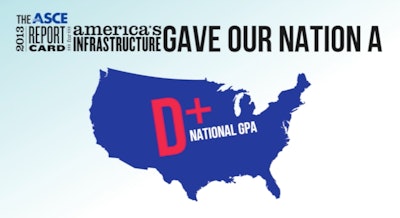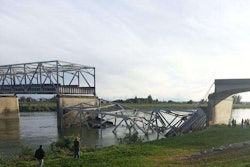 (Photo: ASCE)
(Photo: ASCE)Earlier this year, the American Society of Civil Engineers (ASCE) gave American infrastructure a D+ on its 2013 Report Card.
According to ASCE’s grading system, a D+ means the infrastructure is “poor.” ASCE evaluates infrastructure by categories, basing grades on capacity, condition, funding, future need, operation and maintenance, public safety and resilience.
Here is a quick breakdown of America’s infrastructure grades:
-
Aviation: D (poor)
-
Bridges: C+ (mediocre)
-
Dams: D (poor)
-
Drinking Water: D (poor)
-
Energy: D+ (poor)
-
Hazardous Waste: D (poor)
-
Inland Waterways: D- (poor)
-
Levees: D- (poor)
-
Ports: C (mediocre)
-
Public Parks and Recreation: C- (mediocre)
-
Rail: C+ (mediocre)
-
Roads: D (poor)
-
Schools: D (poor)
-
Solid Waste: B- (good)
-
Transit: D (poor)
-
Wastewater: D (poor)
ASCE estimates $3.6 trillion dollars will need to be invested in American infrastructure by 2020 to “maintain a state of good repair” (at which point the system would receive a grade of B). That would mean investing $454 billion (in current dollars) yearly. But ASCE estimates $253 will be invested yearly, creating a $201 billion dollar gap.
View the full report card here, or get the smartphone app from Google Play or iTunes.
For more information about ASCE’s 2013 Report Card for America’s Infrastructure, visit infrastructurereportcard.org.








